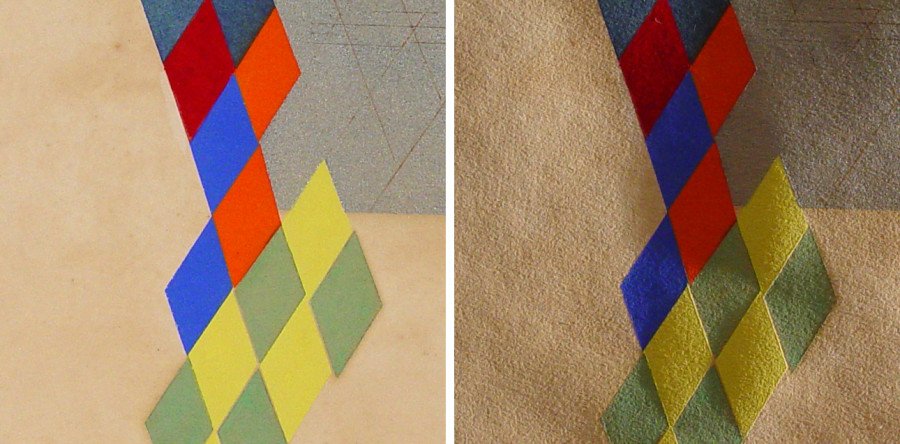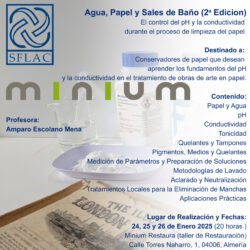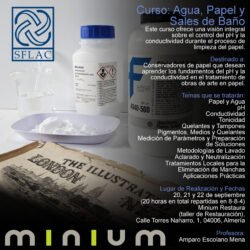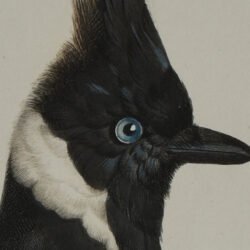Pochoir is a stencil-based printing technique popular from the late 19th century through the 1930’s, with its center of activity in Paris. It was primarily used by illustrators and designers to create patterns and architectural design prints. Was used during the Art Nouveau and Art Deco periods and at the peak of its popularity in the early 20th century, there were as many as thirty graphic design studios in France using this technique, each employing up to 600 workers.
The manual aspect of pochoir has been both one of its most valuable attributes and one of its greatest failures as a printing medium. It is both labor and time consuming, making it an expensive and slow process of printmaking. As a result, techniques such as lithography and serigraphy, mechanized in nature, replaced pochoir as a method of reproduction.
Pochoir technique begins with the analysis of the composition, including color tones and densities, of a colored image. A craftsman known as a découpeur would cut stencils with a straight-edged knife. Numerous stencils were designed as a means of reproducing an image. The stencils were originally made of aluminum, copper, or zinc but eventually the material of choice was either celluloid or plastic. The stencils created by the découpeur would be passed on to the coloristes. Along with the transition of stencil materials, there was a shift away from the use of watercolor towards the broad, soft, opaque layers of gouache. The technique was further refined in an effort to create the most vivid, accurately colored reproductions. The coloristes applied the pigments using a variety of different brushes and methods of paint application to create the finished pochoir print.

Detail of Man Ray’s “Revolving Doors X (Libellule)”
On the pochoir prints, the thick paint medium, usually gouache, causes a build up against the stencil’s edge resulting in a surface elevation that can be both seen and felt. The right picture was taken with raking light to accentuate the differences between the thicknesses of the applied colors.
Pochoir was used by artists, in conjunction with other mediums such as engraving, lithography, or photography, as a means of adding color to a print. Each print is unique because it is done by hand and each remains vivid in both tactile and visual sense. Some artists that used pochoir as a printing technique include Man Ray, Henry Matisse, Georges Braque, Pablo Picasso, Albert Gleizes, Juan Gris, Fernand Léger, or Sonia Delaunay.
On the pochoir prints, the thick paint medium, usually gouache, causes a build up against the stencil’s edge resulting in a surface elevation that can be both seen and felt. Also, the bristle traces resulting from the manual execution of the print are visible. Just varying the pressure on the brush, or the gradation of the color, affects the printed results. In addition, diverse textures can be obtained by varying the ink application technique such us brushing, spraying, spattering, or sponging. Finally, transparent watercolor glazes can be applied on top of a thick opaque gouache to create unique nuances. All those characteristics are what make each pochoir a unique print.
The use of the gouache as printing ink is precisely what makes pochoirs a very delicate and unique prints. Moreover, the high solubility of the medium makes any conservation treatment very complex and difficult, requiring a deep knowledge and understanding of the technique, especially if the treatment involves a cleaning process. Due to the mentioned extreme water solubility of the gouache, any wet treatment should be avoided if possible.





